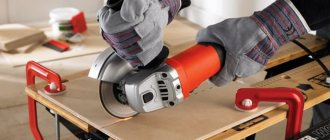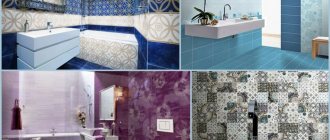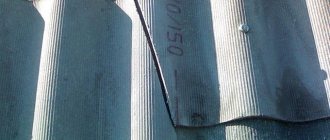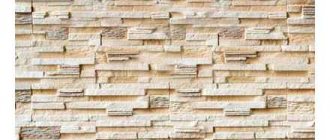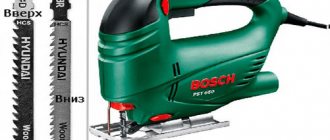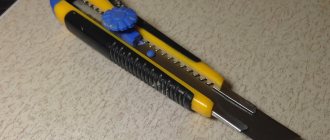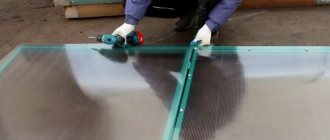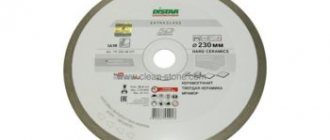When laying ceramic tiles, it will not be possible to do without cuts. Moreover, they can be straight or curved, in the form of a circle. Each type of work requires a certain type of tool. At home, you can use a grinder or an angle grinder. But in order to make high-quality cuts, you need to know which grinder blade to choose for ceramic tiles. It is also advisable to familiarize yourself with the features of using this tool.
The process of cutting tiles with a grinder requires certain skills
Which disc to cut ceramic tiles with a grinder
There are many types of grinder blades that are suitable for cutting ceramic tiles. However, you should immediately stop purchasing cheap equipment, since their service life is short and their use can be dangerous.
Important! How smoothly and without chips the cut will be made depends on the correct choice of disk.
Stone discs
The most budget option, but in terms of reliability it is inferior to all other types. When using it, the cutting thickness will be much thicker, and a lot of dust will be generated during operation.
During use, you need to monitor the condition of the stone circle. And as soon as chips appear on it, replace it.
Steel wheels
This is the most reliable and durable type of equipment for an angle grinder. The steel wheels have a diamond-coated edge. And their service life depends on its intensity.
Using a steel disc on tiles for an angle grinder, you can make straight and shaped cuts without much difficulty.
Segmented dry cutters
This type of equipment is distinguished by the fact that its surface is divided into identical segments. And the cutting edge is coated with diamond.
Thanks to the slots, the disc is able to partially cool during use. This increases the duration of continuous operation to 1.5 minutes. After this, you need to let the tool cool, moving it to the side and keeping it idling for 30 seconds.
Segmented blades are for dry cutting only
Solid dry cutters
This is a solid circle with diamond coating applied around the edge. This equipment is convenient for processing tile edges. After using a solid disc on tiles for an angle grinder, the edges of the material are as smooth as possible.
To cool, it is recommended to periodically wet the tiles and also spray them with a spray bottle.
Combined disc models
This type of equipment is suitable for dry and wet cutting. But unlike segmented ones, they are inferior in terms of cooling, and solid ones do not produce such a high-quality cut.
Important! The disadvantage of combined types of equipment is that they quickly become clogged with small dust particles, and only concrete and sand-lime brick can be used to clean them.
Diamond wheel
To perform complex types of work, it is recommended to use this type of equipment. Its peculiarity lies in a special coating, which consists of small particles of industrial diamonds applied on top of a metal base. This allows the disk to withstand increased loads.
What determines the price of a circle?
The cost of discs largely depends on the manufacturer, the size of the circle and its type. The most well-known manufacturers of quality discs are brands such as:
- Bosch
- Distar
- DeWALT
- Dronco
- Emar Vollrand
- HILTI
- Norton
- Kronenflex
Among domestic manufacturers it is worth highlighting the following:
- Bison
- LugaNova
- Interskol
- Practice
Obviously, foreign manufacturers will cost more than domestic ones due to the markup for the cost of the brand and transportation. According to the results of independent testing of well-known manufacturers on the market, it was the ZUBR that showed results that significantly exceed the performance of foreign models.
The technology of spraying diamond abrasive onto the cutting edge also affects the price of the blade. The most common technologies are:
- Soldering. We mentioned these products above, where abrasive shavings are soldered to the edge with silver solder. The technology is cheap and allows you to reduce the cost of models, however, when heated, the solder loses its quality and the diamond coating quickly wears out. Consequently, the service life of the circle is short, but quite suitable for domestic use.
- Geometric closure. In this method, electricity is used to heat the edge as much as possible and diamond sand is firmly soldered into the surface of the wheel. The service life of such products is significantly longer than previous ones, and the price still remains within the range of affordability. Typically, this method is used for combination wheels that are suitable for dry and wet cutting.
- Laser soldering. This is a very expensive technology and is reserved for industrial use models. With this wheel you can cut everything from white brick to granite. The price of the product varies from 9,000 to 25,000 rubles.
Important! Today the market is filled with outright fakes of well-known brands, so when buying a disc for dry cutting of porcelain stoneware or tiles, pay attention to the price. For example, a circle from the manufacturer Bosch or HILTI cannot possibly cost 900-1200 rubles. Make purchases only at specialized retail outlets or brand offices.
How to choose the right disk
When choosing equipment for working with ceramic tiles, you need to take into account the complexity of the work and the thickness of the material. It is recommended to use steel circles with laser-brazed diamond coating, as well as with positive locking. These types can withstand increased loads and have a long service life.
To obtain a smooth edge when cutting ceramic tiles, you should choose discs with a thickness of no more than 2 mm, and with a cutting edge width greater than the thickness of the material.
Types of diamond-coated discs can withstand increased loads
Diamond-coated discs (dry cutters)
Let's understand the dry cutters - this will help you better understand the purpose of the attachments even before purchasing them.
- Segmented dry cutters. They can be used to cut and polish porcelain stoneware and natural stone tiles - as a rule, these are one of the most expensive and durable materials. A segmented disk looks like this: cuts are made along the entire circumference, the purpose of which is to cool the diamond wheel during operation, so it works longer. These types of angle grinder wheels are the highest quality and most durable; they can also be used to cut ceramic tiles with a grinder.
- Solid dry cuts. This disc for an angle grinder on ceramic tiles is good because, due to the absence of segments, it can rotate at a higher speed. This allows not only cutting, but also grinding - solid dry cutters are ideal for processing tile edges. The main disadvantage of such cutting wheels for grinders is the cost; their prices are not low. In addition, due to the solid disk, they need more time to cool, which slows down the work somewhat.
- Combined dry cutters. This cutting wheel for ceramic tiles is a cross between a segmental and a solid one. It cools faster than a solid wheel, but is inferior in grinding capabilities, and the cutting accuracy of combination wheels is lower compared to segmented ones. However, it can be used when the volume of tiles to work with is small, and there is simply no time to use several different discs for cutting and grinding.
You already know which tile grinder disc you will need while working, all you have to do is go and buy it. Most often, manufacturers write what a particular circle is intended for - tiles, stone, porcelain stoneware, and so on. There shouldn't be any problems with this.
Separately, we note that any steel disc on tiles for an angle grinder with diamond coating can surprise you with a luminous circle during operation - this is a simple “licking” of the metal surface. You can get rid of this dangerous phenomenon in the following way: make several cuts on an abrasive surface, preferably on plaster. After this, the diamond coating can be used again.
Features of cutting ceramic tiles with a grinder
If we talk about tools, the grinder is not intended for cutting ceramic tiles: it is an angle grinder; manufacturers note that the task of the tool is not to cut ceramics, but to polish it. To cut tiles, there is a so-called tile cutter - a specialized device that allows you to cut tiles, porcelain stoneware, natural stone and many other materials in a matter of minutes. It has only two drawbacks - it is an expensive and too highly specialized product, which is not particularly necessary for home craftsmen. This is why most people who do home renovations on their own prefer an angle grinder to any other tools - it’s cheaper and sometimes even more convenient. Moreover, the prices of cutting wheels cannot be called prohibitively high.
Among the features of working with an angle grinder, you need to remember about the casing - yes, it reduces the maneuverability of the angle grinder, but it often saves health and even life by stopping fragments of tiles and even a grinding wheel flying in your direction.
The second feature is that you shouldn’t skimp when buying discs; the more suitable cutting wheel you use, the less chance you have of splitting the tiles and leaving an uneven edge, and besides, it’s much safer for you and the tool itself.
How to cut tiles with a grinder without dust and chips
The main disadvantage of using an angle grinder to cut tiles is that a lot of dust is generated. This makes the job much more difficult. Therefore, experienced builders recommend initially sawing the glaze layer with a grinder. In this case, practically no dust is released. And only then break the ceramic tile along the cut.
Also, when using an angle grinder, chips often appear. Therefore, in order to saw off ceramic tiles with high quality, it is recommended to reduce the speed when entering and exiting the material. And also start sawing a little to the right of the marking mark. In this case, the chips can be cut off later with a grinding wheel.
Wet cutting
The appearance of scale and dust can be prevented by carrying out wet cutting. This method involves contact of the cutting edge with liquid. This can occur by immersing the working surface of the equipment in water or by applying a stream of water to it.
Discs for ceramic tiles
Ceramic tiles are a fragile material, sensitive to impacts and mechanical damage. When laying tiles, it is often necessary to cut them, since the material is used for cladding; the cut line must be clear and even. If a crack appears in the process, it’s a defect. It is especially difficult to make holes without chips in glazed tiles: one wrong move by the master and the product can be thrown away.
In everyday life, angle grinders are usually used to cut tiles. For an angle grinder, you buy a thin diamond disc for tiles - it has a continuous edge coated with artificial diamonds. The diameter of the equipment for hand tools is from 125 to 180 mm. An additional plus is the ability to cut shapes.
In the professional field, tile cutters and stone cutting machines are used. Their use allows you to reduce the human factor to a minimum, increase accuracy and greatly speed up the work process. The size of cutting wheels for ceramics for this equipment is 180-1000 mm. The consumable performs a wet cut.
Types of cutting ceramic products
Unlike a flat cutter, an angle grinder allows you to perform different types of cutting. But each specific case has its own characteristics that need to be paid attention to.
Straight cutting or straight cut
This is the standard method for cutting ceramic tiles. It involves dividing the material along straight lines.
Algorithm of actions:
- Initially, you need to mark the cutting line. To do this, use a ruler and marker.
- Place the workpiece on a straight surface and remove all excess.
- Secure the tile with a vice.
- Make the first cut to a depth of 1-5 mm, depending on the thickness of the material. When entering the tile, reduce the speed and then increase it.
- The grinder needs to be driven away from you, at the same speed, evenly.
- When exiting the material, you should also slow down to avoid chipping.
- Break the workpiece along the cut line.
- Clean the edges with a jig.
Important! When making a cut, you must adhere to the chosen trajectory as much as possible.
It is better to make straight cuts not completely with subsequent breakage of the workpiece
Curly cutting or curly cut
This type of work is the most difficult. Therefore, it requires a certain skill for high-quality execution.
Work rules:
- Before cutting ceramic tiles with a grinder, you need to make markings with a marker.
- Place the tile on a flat surface and secure it.
- Next, make small vertical cuts, cutting off excess material.
- At the end, there will be some uneven areas that need to be sanded down with an abrasive wheel.
Cutting rectangular holes in tiles
In this case, you need to prepare a drill to make holes along the edge.
Work progress:
- Draw the outline of the hole with a marker.
- Fix the tile on a flat surface.
- Use a drill to make holes in the corners of the intended rectangle.
- Using a grinder, walk along the contours of the intended rectangle.
- Remove the inner part.
- When finished, polish the edges with abrasive.
Cutting circles (round holes)
Before cutting the tiles with a grinder, you need to make a central hole with a drill. To do this, you need to use a carbide drill, the diameter of which is within 3-4 mm.
Work progress:
- Mark the center point of the circle with a marker on the tile.
- Use a compass to outline the outline.
- Use a drill to drill a hole at the center point.
- Using a grinder, make vertical notches from the center to the outer edge of the circle, crosswise.
- Cut off excess material and clean the edges with abrasive.
45° cutting
In order to perform high-quality work in this case, you need to use a metal circle coated with diamond.
Procedure:
- Mark a cutting line at a 45 degree angle with a marker.
- If possible, fix the material face down.
- Make the first cut with a grinder.
- Repeat if necessary to improve the result.
Important! When cutting tiles at an angle of 45 degrees, it is necessary not to reach 1.5-2 mm of the glaze, that is, only cut off the clay.
Making a cut in a straight line
This is one of the most common and easiest ways to cut ceramic tiles using a grinder. The method is implemented as follows:
- We make markings. To do this, use a pencil or felt-tip pen of a contrasting color. But be sure to leave a small allowance for sanding. Because ceramic tiles cannot be cut perfectly. If visible external cladding is planned, then leave a gap of several millimeters. If the edge is covered, for example, with a plinth, then there is no need to leave an allowance.
- Tiles should only be laid on a flat, stable surface. The material is fixed either with a vice or clamps, or simply pressed, for example, with a foot.
- As a rule, you only need to cut the base, and then just break it off. The speed of the grinder decreases if you insert the cutting edge into the ceramic layer. We hold the machine perpendicular to the stove. We drive smoothly and at the same speed, away from ourselves, strictly adhering to the drawn line. When entering and exiting the circle into the material, we reduce the speed.
- Place the treated tiles on a flat, hard surface. And with a sharp, precise movement we break it off along the line. If you need to cut a ceramic element at an angle of 45 degrees to form, for example, a joint, it is better to trim off the excess with a grinding attachment after cutting the tile at a right angle. But there are masters who can do this with an angle grinder due to their experience.
- It is recommended to pre-soak the tiles in water for 40-45 minutes to make it easier to cut. Such manipulations will not help with porcelain stoneware; it should not be soaked. Smooth cuts are obtained here by attaching a steel ruler with a clamp along the desired cutting line.
- When working with a sander, it is important to follow safety precautions. That is, wear glasses, gloves, and protective clothing. Remember that scale from the disc is dangerous to the eyes and skin.
The process described above can be seen in detail in the following video:
Features of working with porcelain stoneware
Porcelain stoneware material is particularly durable and reliable. After all, it is made of natural stone. To cut porcelain stoneware without chipping with a grinder, like tiles, you need to use thin segmented discs up to 1.5 mm thick with intense continuous diamond coating. This will reduce the likelihood of overheating.
Porcelain tiles should be cut in the same way as tiles.
Safety precautions when working with an angle grinder
When working with a grinder with tile material, you must take precautions.
Basic safety rules:
- mandatory presence of a protective casing for the tool;
- cord length is at least 2 m;
- keep the grinder strictly vertical;
- use protective equipment;
- hold the tool with both hands and saw away from you;
- do not put pressure on the disc;
- Do not cut with a tool immersed in water.
Important! You can cut tiles with an angle grinder only in a room with good ventilation, as the resulting dust is explosive.
